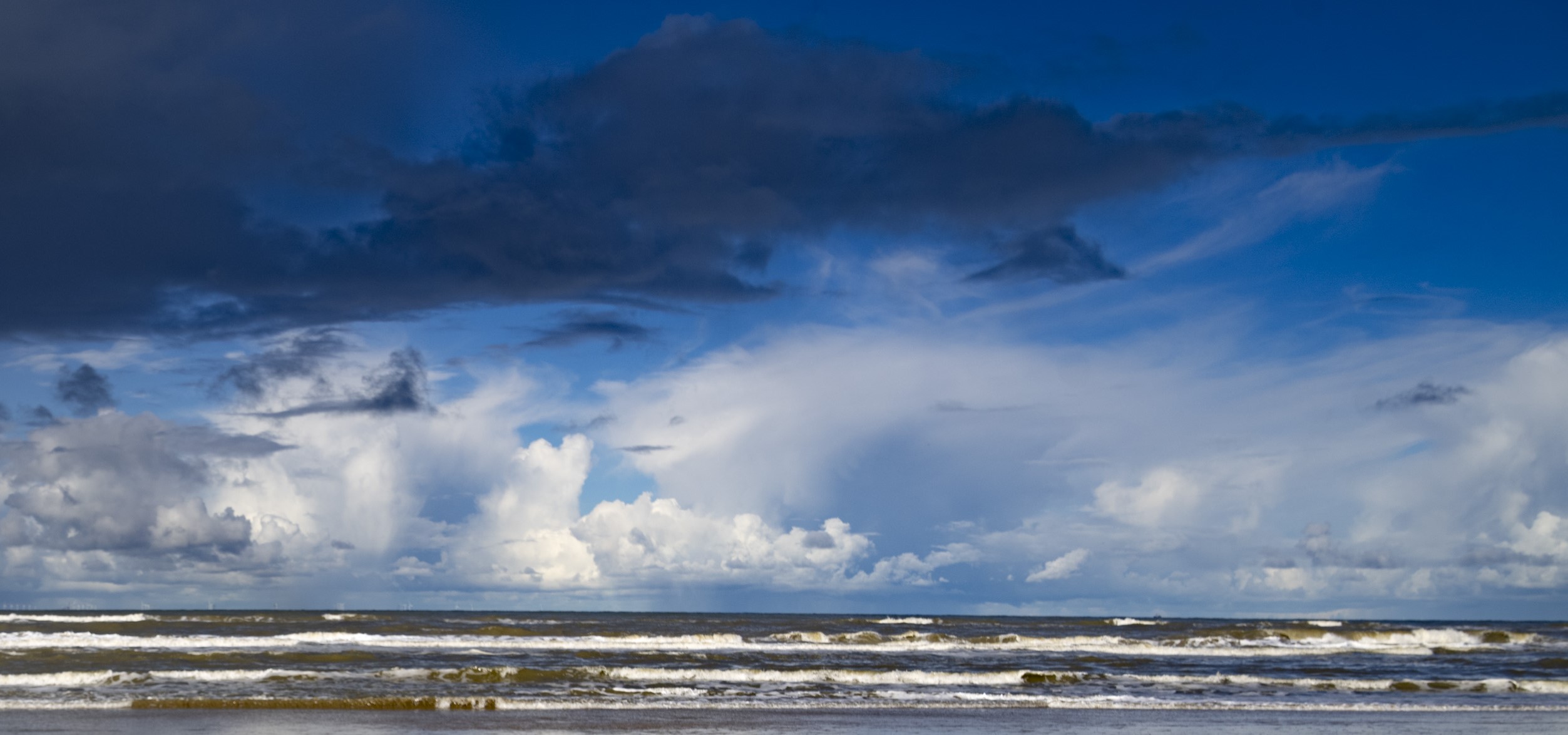Hieronder leest u het NeFCA verslag geschreven door Julie Schoorl over het Gala van de Wetenschap & Samenleving, wat plaatsvond op pi-dag (14 maart) 2022. Ionica was samen met Jim Jansen host van het Gala.
On pi-day, the 14th of March, the very first edition of the Gala of Science and Society took place in a sold-out Stadsgehoorzaal in Leiden, the City of Science of 2022. Hosted by University of Leiden’s science communication professor Ionica Smeets and chief editor of New Scientist Jim Jansen, this event was all about the conversation between -you might have guessed- science and society. Over 800 people were present and the audience consisted of a mix of scientists, journalists, policy makers and citizens. The invited speakers came from various (scientific) backgrounds and entertained the audience with various engaging talks. Virologist Marion Koopmans thanked everyone for being part of the largest epidemiological experiment in history, chemist and Nobel-prize winner Ben Feringa emphasized the importance of curiosity and physicist Ivo van Vulpen acknowledged complicated contradictions in theory coming from Einstein and Hawking and how this led us to connect the small with the large.
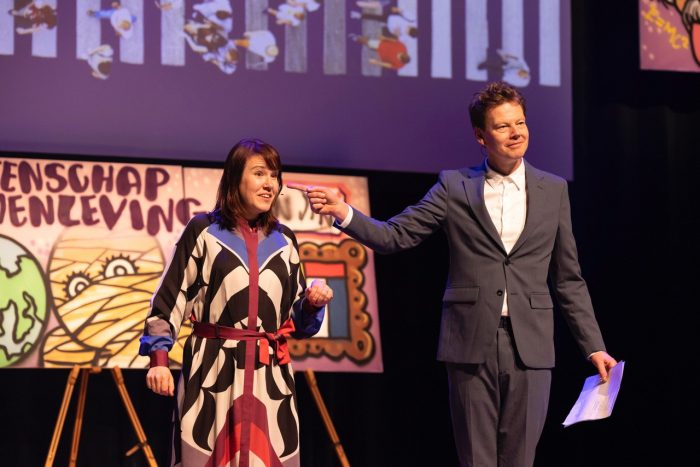
Apart from professors offering new scientific insights, there were various scientists invited to the stage who have been working in the field of (science) communication for a long time – representing NeFCA at this large event. Professor of Artificial Intelligence and Society Claes de Vreese from the University of Amsterdam discussed the worrisome yet simultaneously fascinating developments of AI and what (dangerous) implications this might have for society. As an example, he mentioned the deepfake videos that are now produced ever more rapidly and spread on the Internet. Such a development introduces risk, as it becomes increasingly difficult to determine what (or who) is real and what (or who) is not. This could possibly impact important societal phenomena like democratic voting polls, which is why De Vreese is very motivated to continue his research.
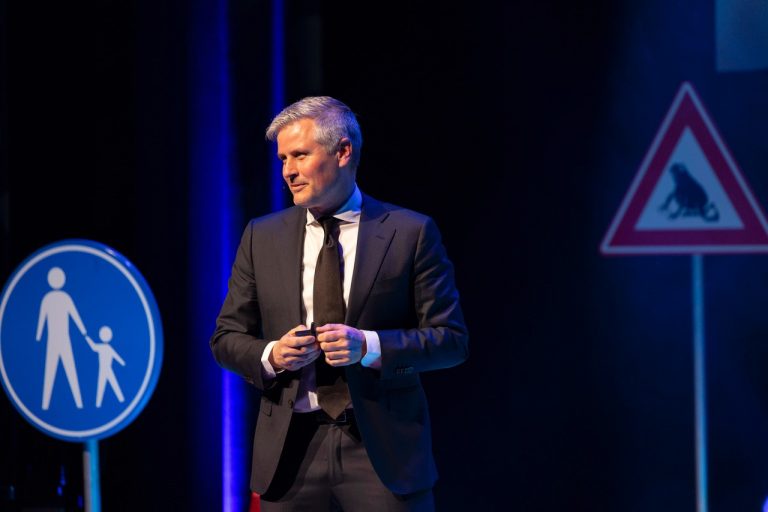
Following his talk, behavioural scientist Reint Jan Renes, lector at the Amsterdam University of Applied Sciences, appeared on stage. He focused on the attempts to change behaviour in relation to climate change. Renes made the audience aware of the apparent disconnect between the thoughts and intention to change behaviour and the realization of genuinely changing that behaviour. He prompted the audience to formulate one simple and small resolution that they should share with their environment, such as making the promise to eat less meat, in order to make that small step forward towards a better climate.
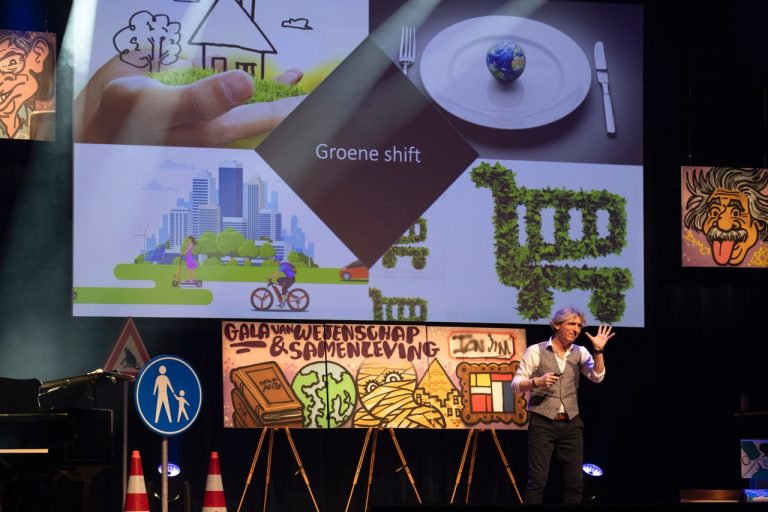
Apart from talks related to societal issues like democracy and climate change, there were also engaging battles and quizzes to entertain the audience. Margriet van der Heijden, physicist, science journalist and professor of Science Communication at Technical University Eindhoven, was able to show the misconceptions and underrepresentation of women in science. She had created an interactive Kahoot! Quiz that revealed that the audience surprisingly underestimated the representation of women in science, while it also revealed a lack of factual knowledge about women in science in the past. This activity was quickly followed by a dynamic battle between quantum physicist Julia Cramer and cognitive neuroscientist Barbara Braams, who were representing the natural sciences and the social sciences respectively. They both had to essentially ‘sell’ their field of science to the audience by describing world-changing ideas and most inspiring studies within their field. The audience seemed to slightly favour the natural sciences, as was proven by measuring the noise (read: applause and cheering) made by de crowd. However, both contestants managed to convey their enthusiasm and stress the importance of the discoveries and ongoing research in their respective fields.
While the battle had shown that the audience was capable of making noise, professor Ionica Smeets managed to induce a striking silence during her monologue about the flaws that still linger in the field of science communication. She emphasized the need to listen to conversational partners, even if one does not agree with them, and the urgency to aim communication towards those people that are in need of information, not just the groups that are easiest to reach. The monologue was reinforced by the accompaniment of a soundscape by pianist Tom Dicke. This musical intermezzo managed to highlight both the importance as well as the exciting possibilities of science communication.
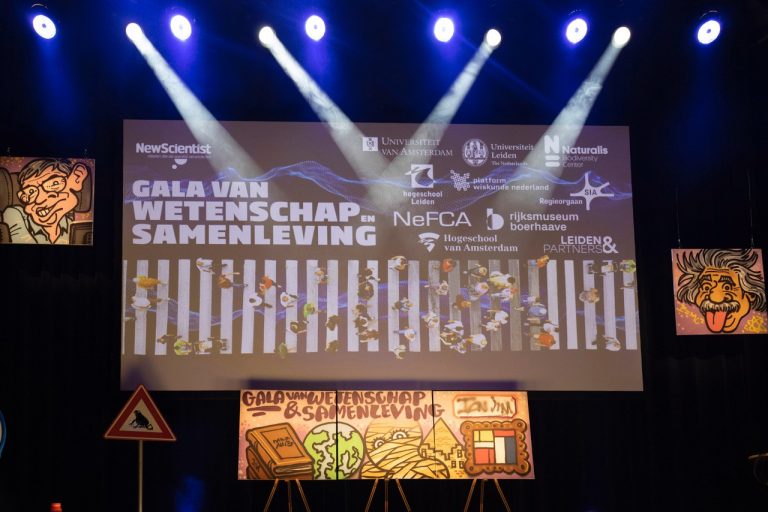
The variety of talks, the interactive elements and the enthusiasm of the two hosts resulted in a successful event. Many chats ensued, both formal and informal, between various audience members. Everyone left the Stadsgehoorzaal a little more informed and -hopefully- a little better equipped to communicate in informal and academic contexts.
Julie Schoorl
